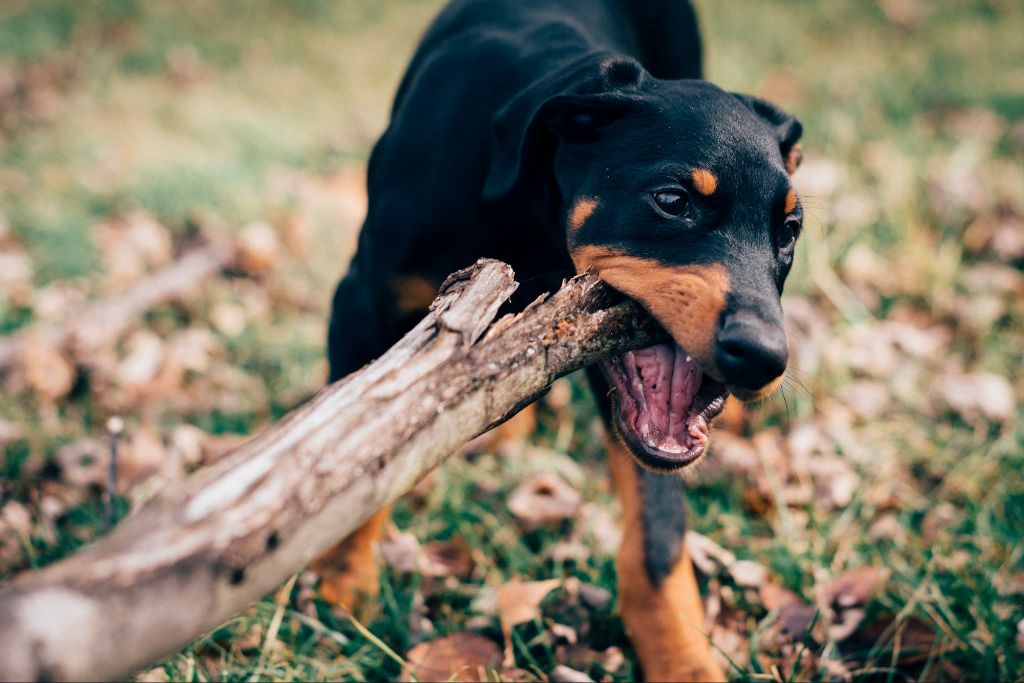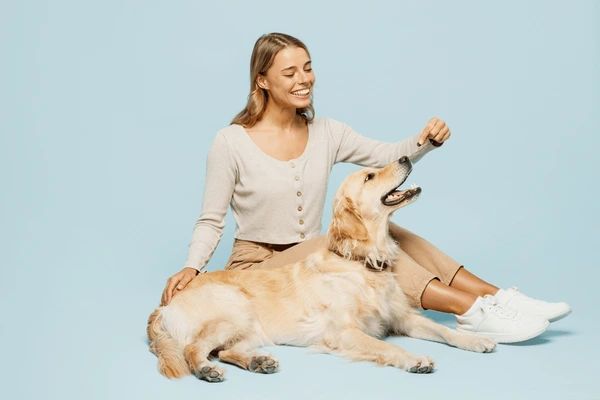Doberman Pinscher: Exploring The Characteristics Of A Protective Breed
The Doberman Pinscher is a relatively new breed that originated in Germany around 1890. The breed was developed by Karl Friedrich Louis Dobermann, a tax collector who wanted a dog to accompany him on his rounds for protection. Dobermann crossed several breeds, including the Rottweiler, German Pinscher, and Beauceron, to create the Doberman Pinscher.
Doberman Pinschers are medium to large dogs that are compactly built and very muscular. They have a square build, erect ears that are often cropped, and a docked tail. Their coats are short, smooth, and hard and come in four colors – black, red, blue, and fawn. White markings are allowed on the chest, paws, and muzzle.
The original purpose of the Doberman Pinscher was as a guard dog and personal companion. Doberman Pinschers are very loyal and intelligent, with a strong instinct to protect their family. They are energetic working dogs that need regular exercise and mental stimulation.
Temperament
Dobermans are known for their intelligence, trainability, loyalty, and protective nature (Source). They are highly energetic dogs that are eager to work and please their owners. Dobermans are quick learners and respond very well to training, especially when it involves mental stimulation as well as physical activity.
Their loyalty and desire to protect make them excellent guard dogs. They will bark to alert their owners of any potential threats. Dobermans are quite intuitive and can sense if something is amiss, which activates their protective instincts. However, they are also affectionate companions who thrive when they can be close to their family.
Care
Dobermans require moderate exercise daily to stay happy and healthy. A mix of walking, playing, and training is ideal. On average, adult Dobies need 30-60 minutes of exercise per day according to the American Kennel Club. Puppies and adolescents should receive less to avoid overexertion while their bodies are still developing.
This intelligent breed also benefits mentally from interactive toys and games. Providing activities that stimulate their mind is just as important as physical exercise.
Grooming Dobermans is relatively easy compared to other dog breeds. Their short, sleek coat requires only occasional brushing to remove dead hair. Bathing is only needed every few months or when dirty. Pay special attention to cleaning and drying their floppy ears to prevent infection.
Major health concerns include dilated cardiomyopathy, cervical vertebral instability, von Willebrand’s disease, hip dysplasia, and prostatic disease. Responsible breeders screen breeding dogs for these conditions. With proper care, Dobermans live 10-12 years on average according to PetMD.
Training
Early socialization and training are extremely important for the Doberman Pinscher breed. As puppies, Dobermans should be exposed to a wide variety of people, animals, places, and experiences to ensure they grow into well-rounded adult dogs. Positive reinforcement methods work best when training a Doberman. Relying on punishment or force can cause them to become fearful or aggressive. Establishing yourself as a strong, kind leader will allow your Doberman to relax and look to you for guidance. Consider enrolling your Doberman puppy in a formal obedience training class for socialization and to learn basic cues like sit, stay, come, heel, and down. Practice these cues at home daily as part of a consistent training routine.

According to Chewy, use reward-based training methods like food treats, praise, and play to motivate your Doberman to perform desired behaviors. Practice in short sessions multiple times a day to keep it positive and prevent boredom. Patience is key when training a Doberman Pinscher.
Living with a Doberman
Living with a Doberman can be an incredibly rewarding experience for the right owner. Dobermans are intelligent, loyal, and affectionate dogs that form strong bonds with their families. However, they are also energetic working dogs that require a lot of exercise and mental stimulation to stay happy and well-behaved. Dobermans do best with active owners who can provide at least 60-90 minutes of vigorous exercise daily.
Potential owners should be prepared for the challenges of raising and training a strong, driven Doberman puppy. They are extremely energetic as puppies and require extensive socialization and obedience training from a young age. Without proper training and boundaries, Dobermans may develop behavioral issues. However, with the right owner, Dobermans become wonderful companions.
Proper management of a Doberman includes providing enough physical and mental exercise each day through activities like jogging, hiking, swimming, or dog sports.Their intelligence makes them prone to boredom and destructive behavior if under-stimulated. Dobermans should also be trained positively using rewards-based techniques, never punishment. With the right lifestyle match and training methods, living with a Doberman can be an incredibly fun and active experience.
Dobermans as Guard Dogs
Dobermans are known to have a natural protectiveness that makes them excellent guard dogs. According to this source, male Dobermans in particular have the strength and power to be formidable guard dogs due to their bite strength.
However, proper training is essential for a Doberman to be an effective guard dog. As stated in this article, Dobermans need positive reinforcement training to enhance their innate abilities. This includes socialization and obedience training from an early age to ensure they can distinguish between a real threat and normal activity.
The main benefits of Dobermans as guard dogs are their intelligence, loyalty, courage and alertness. Their intimidating presence and bark can also deter potential intruders. However, their protective nature means extensive training is required to minimize aggression towards strangers and reduce territorial behavior.
Overall, Dobermans have exceptional qualities to be guard dogs if given the proper training, socialization and outlets for their energy from a young age. Their natural instincts to protect can be honed into an asset for homeowners looking for a loyal watchdog.
Dobermans with Children
While Dobermans can make great family pets, it’s crucial for parents to properly supervise their Doberman around children and take steps to ensure safe interactions. Dobermans are large, powerful dogs that have historically been bred for protection, so their interactions with children require careful management.
Socializing Dobermans to children from a young age is key. Exposing them to children of different ages in a variety of settings will help the dog become comfortable and trustworthy around kids. However, parents should always supervise children and dogs when they are together and never leave them unsupervised.
When introducing a new baby to the home, make sure the Doberman is appropriately managed. Keep the dog on a leash when the baby is present and provide a safe room or crate where the Doberman can relax away from the baby if needed. Give the dog time to adjust to changes in the home when a new child arrives.
As children grow older, it’s important to teach them how to properly interact with the Doberman. Children should be taught not to tease or bother the dog while it’s resting or eating and to be gentle during play. Parents should watch for any signs of anxiety or intolerance in the dog and separate the dog and child if issues arise.
With training, socialization, and supervision, Dobermans can thrive in homes with children. However, parents considering this breed should be prepared to take extra steps to ensure safe interactions between their Doberman and kids.
Doberman Health
Dobermans are prone to a number of health conditions, so it’s important for owners to be aware of potential issues. Some of the most common health problems seen in Dobermans include:
Hip Dysplasia: This genetic condition leads to arthritis and lameness in the hips. Responsible breeders screen breeding dogs using X-rays.[1]
Dilated Cardiomyopathy (DCM): DCM is a heart disease that can lead to sudden death. Annual cardiac exams, including echocardiograms, are recommended for screening.[2]
Von Willebrand’s Disease: This inherited bleeding disorder can cause excessive bleeding from even minor injuries. A DNA test can identify affected dogs.
Hypothyroidism: Abnormalities in the thyroid gland are common in Dobermans. Symptoms include lethargy, obesity and skin conditions. Thyroid testing can confirm the diagnosis.
The average lifespan for Dobermans is 10-12 years. Responsible breeders aim to breed dogs free of genetic diseases through health testing. However, owners should still expect potential health issues and be prepared to provide excellent veterinary care throughout their Doberman’s life.[3]
Finding a Doberman
Finding the right Doberman puppy or dog can be a challenging but rewarding process. When looking for a Doberman, it’s essential to find a reputable breeder or adoption organization. Avoid pet stores and online listings, which often source from puppy mills and backyard breeders.
A responsible Doberman breeder will screen buyers to ensure the dog is going to a good home, and provide health clearances proving their dogs are free of genetic diseases. According to the Doberman Pinscher Club of America, buyers should confirm the parents have passed health screenings for issues like hip dysplasia, Von Willebrand’s disease, thyroid problems, and eye diseases [1].
Adopting a Doberman from a rescue organization is another great option. Rescues carefully vet adopters and match them with dogs that fit their lifestyle. Adopting provides a home for a Doberman in need. The Doberman Pinscher Club of America has a rescue network that helps place Dobermans from shelters and owner surrenders [2].
When selecting a Doberman puppy or adult dog, temperament is key. Look for an alert but friendly dog that seems eager to bond. Avoid fearful, anxious, or aggressive temperaments. With their large size and protective instincts, proper socialization and training is critical for Dobermans to be stable companion dogs.
Conclusion
Doberman Pinschers are loyal and protective dogs that make for excellent guardians. They are energetic, intelligent, and eager to please, making them highly trainable. However, their protective nature means they need extensive socialization from a young age. With proper training and handling, Dobermans can make devoted family companions. Key things to remember are that Dobermans need lots of exercise, consistent training, and stimulation for their active minds. Their short coats also make them less suitable for very cold climates. While their protective instincts come naturally, proper handling is needed to prevent aggression. With their strength, energy, intelligence and loyalty, Dobermans can make both ideal working dogs and loving pets for the right owner.





